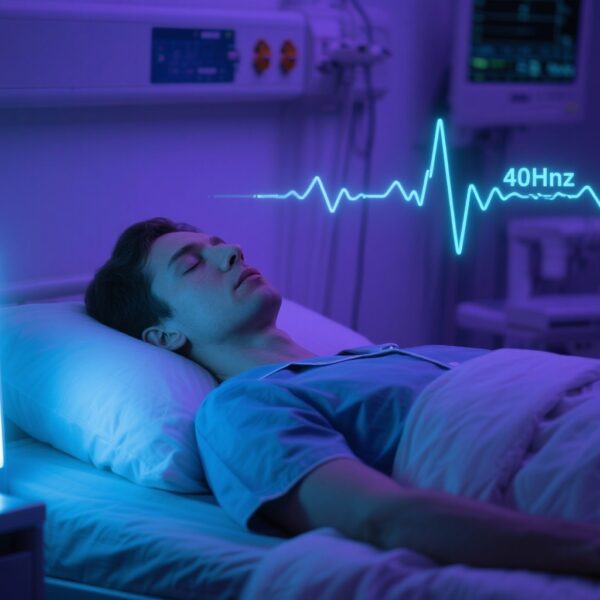Highlights
– The VESALIUS‑CV global randomized trial demonstrates that evolocumab lowers the risk of first major adverse cardiovascular events (3‑point MACE reduced by 25%) among patients with atherosclerosis or diabetes but without prior myocardial infarction or stroke.
– Over a median 4.6 years, 5‑year Kaplan–Meier estimates were 6.2% vs 8.0% for 3‑point MACE (HR 0.75, 95% CI 0.65–0.86) and 13.4% vs 16.2% for 4‑point MACE (HR 0.81, 95% CI 0.73–0.89); number needed to treat (NNT) ≈56 for 3‑point MACE and ≈36 for 4‑point MACE over 5 years.
Background and clinical context
Atherosclerotic cardiovascular disease (ASCVD) remains the leading cause of morbidity and mortality worldwide. Prevention strategies stratify patients into primary prevention (no prior myocardial infarction [MI] or ischemic stroke) and secondary prevention (established prior events). Most large randomized outcome trials of proprotein convertase subtilisin–kexin type 9 (PCSK9) inhibitors have enrolled patients with established ASCVD, demonstrating incremental benefits when added to background statin therapy. Whether PCSK9 inhibition prevents a first major cardiovascular event in patients with atherosclerosis or high cardiometabolic risk but without prior MI or stroke has been an important unanswered question with substantial implications for practice and resource allocation.
Study design
VESALIUS‑CV (NCT03872401) was a double‑blind, randomized, placebo‑controlled, international trial testing evolocumab 140 mg subcutaneously every 2 weeks versus placebo. Key eligibility criteria included patients with atherosclerosis or diabetes and an LDL‑cholesterol (LDL‑C) level ≥90 mg/dL, but importantly without a prior MI or ischemic stroke. Randomization was 1:1. The trial enrolled 12,257 patients (6,129 assigned to evolocumab and 6,128 to placebo). Median age was 66 years, 43% were women, and 93% identified as White. Median follow‑up was 4.6 years. The two prespecified primary endpoints were: (1) 3‑point MACE — composite of coronary death, myocardial infarction, or ischemic stroke; and (2) 4‑point MACE — the 3‑point composite plus ischemia‑driven arterial revascularization.
Key results
The trial met both primary endpoints in favor of evolocumab.
Primary outcomes
– 3‑point MACE: 336 events in the evolocumab arm versus 443 in placebo. Five‑year Kaplan–Meier estimates were 6.2% with evolocumab and 8.0% with placebo. The hazard ratio (HR) was 0.75 (95% confidence interval [CI] 0.65–0.86; P < 0.001).
– 4‑point MACE: 747 events with evolocumab versus 907 with placebo. Five‑year Kaplan–Meier estimates were 13.4% and 16.2% respectively. HR was 0.81 (95% CI 0.73–0.89; P < 0.001).
Absolute benefit and clinical translation
The absolute risk reduction (ARR) over 5 years was approximately 1.8% for 3‑point MACE (8.0% − 6.2%), yielding an NNT of about 56 to prevent one first 3‑point MACE over 5 years. For 4‑point MACE the ARR was about 2.8% (16.2% − 13.4%), with an NNT of roughly 36 over 5 years. These figures place the magnitude of benefit in the clinically meaningful range for selected higher‑risk primary prevention patients.
Safety
The investigators reported no evidence of a between‑group difference in the incidence of safety events. This aligns with prior PCSK9 inhibitor trials that have not identified major safety signals in relation to neurocognitive effects, new‑onset diabetes, or serious adverse events attributable to the antibody. Detailed safety tables and adjudicated adverse event classifications were part of the full trial report.
Context with prior trials
Previous outcome trials focused on secondary prevention. FOURIER (evolocumab, NEJM 2017) enrolled patients with established ASCVD and showed relative event reduction driven largely by nonfatal events (HR for composite endpoint ~0.85). ODYSSEY OUTCOMES (alirocumab, NEJM 2018) showed benefit after acute coronary syndrome. VESALIUS‑CV is the first large randomized trial to demonstrate benefit of a PCSK9 inhibitor specifically in patients without prior MI or stroke but with atherosclerosis or diabetes and elevated LDL‑C.
Expert commentary and interpretation
VESALIUS‑CV expands the evidence base for PCSK9 inhibition beyond the secondary prevention population. Several points merit emphasis for clinicians and policymakers:
Patient selection and generalizability
Eligibility required LDL‑C ≥90 mg/dL despite background therapy and either atherosclerosis or diabetes. Therefore, findings most directly apply to patients with demonstrable atherosclerotic disease (for example, peripheral arterial disease, imaging evidence of atherosclerosis, or high atherosclerotic burden) or diabetes combined with elevated LDL‑C. The trial enrolled a predominantly White population (93%), and applicability to other racial and ethnic groups should be interpreted cautiously pending further data or real‑world experience.
Magnitude of benefit vs cost and logistics
Relative risk reductions of 19–25% are clinically meaningful, but absolute benefit is modest in lower‑risk primary prevention cohorts. NNTs of ~36–56 over 5 years suggest that using evolocumab broadly in all primary prevention patients with LDL‑C ≥90 mg/dL would yield sizeable aggregate benefits but also large cost and resource implications. Decision frameworks should prioritize patients with higher baseline risk (multiple atherosclerotic territories, high coronary artery calcium, progressive disease despite optimal statin/ezetimibe, or very high LDL‑C) where absolute risk reduction will be greatest.
Mechanistic plausibility
PCSK9 monoclonal antibodies lower LDL‑C by enhancing LDL receptor recycling. Lowering LDL‑C reduces atheroma progression and plaque vulnerability, which plausibly prevents first events in patients with subclinical or symptomatic atherosclerosis. The temporal separation of benefit in the VESALIUS‑CV trial (emerging over follow‑up years) is consistent with an anti‑atherosclerotic mechanism rather than purely anti‑thrombotic effects.
Limitations and remaining questions
Key limitations include the trial population demographics and the preselection of patients with LDL‑C ≥90 mg/dL; therefore, results cannot be extrapolated to patients with lower LDL‑C levels or to younger populations without atherosclerosis or diabetes. Long‑term safety beyond the median 4.6 years and cost‑effectiveness in different health systems remain open questions. Comparative effectiveness versus intense lipid‑lowering strategies (maximized statin + ezetimibe) in pragmatic populations also warrants exploration.
Practical implications for clinicians
For a clinician managing a patient with atherosclerosis or diabetes who has LDL‑C ≥90 mg/dL despite optimal statin therapy (and ezetimibe if indicated), VESALIUS‑CV supports considering evolocumab to reduce the risk of a first major cardiovascular event. Shared decision‑making should incorporate estimated absolute risk, patient preferences, affordability, and access. In lower‑risk primary prevention patients without demonstrable atherosclerotic disease, routine use of PCSK9 inhibitors is not supported by this trial and would likely yield smaller absolute benefits.
Conclusion
VESALIUS‑CV provides robust randomized evidence that PCSK9 inhibition with evolocumab lowers the incidence of first major cardiovascular events among patients with atherosclerosis or diabetes and elevated LDL‑C who do not have prior MI or stroke. The trial met both primary endpoints with clinically meaningful relative risk reductions and modest absolute risk reductions. The data support targeted use of evolocumab in higher‑risk primary prevention patients, while highlighting the need for judicious patient selection, attention to equity and generalizability, and consideration of cost‑effectiveness.
Funding and trial registration
The VESALIUS‑CV trial was funded by Amgen. ClinicalTrials.gov registration: NCT03872401.
References
1. Sabatine MS, Giugliano RP, Keech AC, et al. Evolocumab and Clinical Outcomes in Patients with Cardiovascular Disease. N Engl J Med. 2017;376:1713–1722. doi:10.1056/NEJMoa1615664.
2. Schwartz GG, Steg PG, Szarek M, et al. Alirocumab and Cardiovascular Outcomes after Acute Coronary Syndrome. N Engl J Med. 2018;379:2097–2107. doi:10.1056/NEJMoa1801174.
3. Boekholdt SM, Hovingh GK, Mora S. Use of PCSK9 inhibitors in clinical practice — How should we select patients? Nat Rev Cardiol. 2020;17:705–716. doi:10.1038/s41569-020-0419-7.
4. American College of Cardiology/American Heart Association Task Force on Clinical Practice Guidelines. 2018 Guideline on the Management of Blood Cholesterol. Circulation. 2019;139:e1082–e1143. doi:10.1161/CIR.0000000000000625.
5. Mach F, Baigent C, Catapano AL, et al. 2019 ESC/EAS Guidelines for the management of dyslipidaemias. Eur Heart J. 2020;41:111–188. doi:10.1093/eurheartj/ehz455.
6. VESALIUS‑CV investigators. Evolocumab for prevention of first cardiovascular events in patients with atherosclerosis or diabetes: VESALIUS‑CV. N Engl J Med. 2025. doi:10.1056/NEJMoa2514428.
AI‑friendly thumbnail prompt
A photorealistic clinic scene: a middle‑aged patient (gender‑neutral) sitting on an exam table receiving a subcutaneous injection from a nurse, with a digital monitor in the background showing a downward trending LDL‑cholesterol graph and heart icons; neutral clinical lighting, calm professional atmosphere, focus on the syringe and the monitor.



